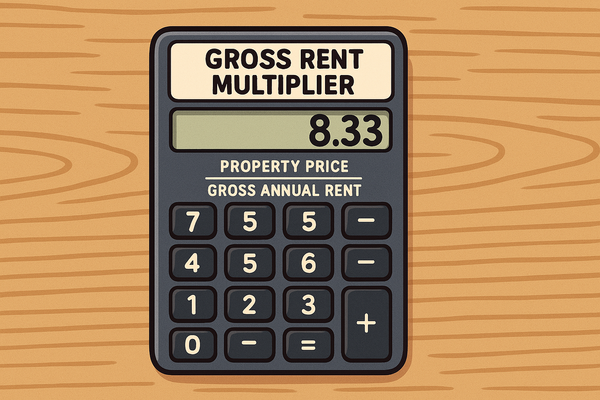Utah Squatters Rights Guide: Understanding Adverse Possession Laws
With a relatively moderate 7-year timeframe for potential adverse possession claims, Utah falls in the middle range compared to other states.

From the shocking Heidi Shippen case where sophisticated squatters completely took over her West Bountiful home after just 10 days of vacation absence—complete with forged documents and hijacked utilities—to the tragic murder of 19-year-old farmer Dylan Rounds by a violent squatter occupying neighboring land, Utah property owners face increasingly complex and potentially dangerous adverse possession challenges.
Introduction to Squatters' Rights in Utah
Definition of squatters vs. trespassers in Utah
In Utah, trespassers are individuals who briefly enter property without permission, constituting a criminal offense. Squatters establish longer-term unauthorized residency, often setting up utilities and creating the appearance of legitimate occupancy. Police can immediately remove trespassers, while squatters typically require formal civil eviction proceedings through Utah courts.
Basic overview of adverse possession in Utah
Utah requires three strict criteria for adverse possession: continuous occupation for 7 years, payment of all property taxes, and color of title (a document appearing to grant ownership). The possession must meet the OCEAN criteria: Open, Continuous, Exclusive, Adverse, and Notorious. Utah courts demand "clear and convincing evidence," making successful adverse possession claims rare.
Why property owners should understand these laws
Understanding Utah's squatters' rights prevents costly mistakes. Property owners who don't know these laws might use illegal self-help eviction methods, risking lawsuits. Knowledge enables proactive measures like regular inspections and proper documentation before the 7-year statutory period expires. As demonstrated in recent Utah cases, awareness can protect your property investment and, in extreme situations, even personal safety.
Historical purpose of adverse possession laws
Adverse possession originated in medieval England to ensure productive land use and resolve boundary disputes when record-keeping was poor.
Today, these laws, primarily codified in Title 78B, Chapter 2, Part 2 of the Utah Code, establish requirements that differentiate casual trespassers from squatters with potential legal claims.
In Utah, these laws became important during territorial expansion when land claims often overlapped due to inconsistent surveys. Today, they are intended to serve as a mechanism for resolving longstanding property disputes, particularly in rural areas with historical boundary uncertainties.
Unfortunately, these laws have been exploited by bad actors attempting to gain property through deceptive means - as seen in the shocking West Bountiful case where squatters forged documents and changed utilities into their names.
Squatter Snippet: Real Case from Utah
In March 2022, a shocking case of squatting unfolded in West Bountiful, Utah, revealing just how elaborate and calculated squatting operations can become. Heidi Shippen had spent four years saving to buy a rental property for her retirement. Shortly after purchasing the home, she went on vacation for ten days. When she returned and stopped by to show a painter around, she was confronted with an alarming sight: unfamiliar cars in the driveway.
When she confronted the woman inside, the response was stunning: "She said 'I live here,' and I said 'You don't live here, this is my house, who are you?'"
What made this case particularly alarming was the level of preparation involved. The investigation revealed the squatters had forged Shippen's signature on legal documents, manufactured fictitious rental agreements, and changed the utilities into their names. When Shippen initially called the police, she encountered the frustrating gray area between criminal and civil law that many property owners face.
Eventually, with evidence of forgery, police obtained a search warrant and arrested three men involved in the scheme. This case highlights how squatters in Utah have evolved beyond simply occupying vacant properties to creating elaborate schemes with forged documents and utility transfers.
Key Timeline: Statutory Period in Utah
- Required occupation period: 7 years in Utah
- Continuous possession requirement: Occupation without significant gaps
- Comparison with neighboring states:
- Idaho: 20 years
- Wyoming: 10 years
- Colorado: 18 years
- Timeline exceptions:
- Military service
- Incarceration
- Legal incompetence/disability
CHART: Adverse Possession Timeline Comparison
| State | Required Years | Special Conditions |
|---|---|---|
| Utah | 7 years | Tax payment & color of title required |
| Idaho | 20 years | Tax payment for 5 years |
| Wyoming | 10 years | Payment of taxes required |
| Colorado | 18 years | No tax payment requirement |
| Nevada | 5 years with color of title, 15 years without | Tax payment required |
Quick Guide for Property Owners
Utah's adverse possession laws present a unique challenge for property owners. With a relatively moderate 7-year timeframe for potential claims, Utah falls in the middle range compared to other states.
However, what makes Utah's laws particularly strict is the requirement for three critical elements:
- Continuous occupation for 7 years;
- Payment of property taxes;
- Color of title (a written document that appears to transfer ownership but is legally defective)
The shocking case of the West Bountiful homeowner who discovered squatters had completely taken over her newly purchased home with forged documents demonstrates why vigilance is critical.
Even more disturbing was the tragic case of Dylan Rounds, a 19-year-old farmer murdered by a squatter occupying neighboring property - an extreme example of the potential dangers associated with unauthorized occupants.
- Know your timeline: Squatters can claim rights after 7 years of continuous occupation
- Documentation matters: Keep property records, tax receipts, and inspection logs
- Regular monitoring required: Vacant properties are most vulnerable
- Legal obligation: Self-help eviction methods are illegal in Utah
- Act quickly: The longer squatters remain, the stronger their potential claim
- Proper notices: Follow legal procedures when removing unauthorized occupants
Prevention: Protecting Your Property
Utah property owners face unique challenges when it comes to preventing adverse possession claims. According to case data, the most common entry points for squatters in Utah include vacant rental properties, seasonal homes, and newly purchased properties where the owner is not immediately occupying the space. Utah courts place significant weight on evidence of property monitoring and security measures when evaluating adverse possession cases.
A particularly effective protection against adverse possession claims in Utah is the consistent payment of property taxes. As the Utah Supreme Court has established through case precedent, regular tax payment is seen as one of the strongest indicators of ongoing ownership interest. Additionally, property owners who can demonstrate regular inspections with documented evidence significantly strengthen their position against potential claims.
- Regular inspections:
- Visit property at least quarterly
- Document each visit with photos/notes
- Effective security measures:
- Secure all entry points
- Consider alarm systems
- Install motion-activated lighting
- Clear signage:
- Post "No Trespassing" signs visibly
- Mark property boundaries clearly
- Property management options:
- Hire professional management for vacant properties
- Consider rental options for long-term vacancies
- Documentation practices:
- Keep tax payment records
- Maintain utility connections
- Take dated photographs regularly
CHART: Property Risk Assessment Matrix
| Property Type | Risk Level | Recommended Prevention | Estimated Cost |
|---|---|---|---|
| Vacant Land | High | Regular inspections, boundary marking, tax documentation | $-$$ |
| Abandoned Building | High | Security systems, regular inspections, property management | $$$-$$$$ |
| Seasonal Property | Medium | Motion-activated security, neighbor monitoring, utilities maintenance | $$-$$$ |
| Investment Property | Medium | Professional property management, tenant screening, regular maintenance | $$-$$$ |
Removing Squatters: Step-by-Step Process
Utah's legal process for removing squatters is governed by specific statutes that prioritize legal due process while protecting property rights. According to Utah Code § 78B-6-801 through § 78B-6-816, property owners must follow formal eviction procedures rather than attempting "self-help" methods. Utah law distinguishes between criminal trespassers (who can be removed by police) and squatters claiming residency rights (who require civil proceedings).
Utah's eviction process differs from neighboring states like Colorado and Wyoming by requiring more specific documentation of ownership and occupancy history. Property owners who attempt illegal self-help evictions in Utah can face penalties including damages for wrongful eviction, which can include the squatter's moving expenses, temporary housing costs, and even potential punitive damages in extreme cases.
- Document the situation:
- Take photos/video of occupation
- Gather ownership documents
- Issue proper written notice to vacate
- File appropriate legal complaint:
- Wrongful detainer action in Utah
- Include all required documentation
- Attend court hearing
- If successful, obtain order of restitution/eviction
- Sheriff enforces removal, not property owner
- What NOT to do:
- Do not change locks yourself
- Do not shut off utilities
- Do not remove squatter's belongings
- Do not threaten or intimidate
- Do not use physical force
- Timeline expectations:
- Notice period: 3-5 days
- Court processing: 1-3 weeks
- Eviction enforcement: 3-7 days after judgment
CHART: Eviction Process Timeline
Utah's eviction timeline is governed by specific time requirements established in Utah Code § 78B-6-805 and § 78B-6-811. The Utah Rules of Civil Procedure mandate specific waiting periods between filing and hearings.
According to recent court data from Utah's judicial system, the average processing time for eviction cases varies by county, with urban areas typically seeing faster processing (7-14 days) than rural jurisdictions (14-21 days). Property owners can request expedited hearings in cases involving property damage or safety concerns, though this is at the court's discretion.
[Discovery of Squatter] → [Documentation: 1-2 days] → [Notice to Vacate: 3-5 days] →
[Court Filing: 1 day] → [Waiting for Hearing: 7-21 days] → [Court Hearing: 1 day] →
[If successful, Wait for Order: 1-3 days] → [Sheriff Enforcement: 3-7 days] → [Property Returned]
Total estimated timeline: 2-5 weeks
Legal Requirements for Adverse Possession
Utah courts evaluate adverse possession claims using the "OCEAN" criteria as specifically interpreted through Utah case law. The Utah Supreme Court has established that these requirements must be strictly proven by the claimant, with the burden of proof falling on the person attempting to establish adverse possession.
Utah adverse possession law requires "clear and convincing evidence" rather than the lower "preponderance of evidence" standard used in some neighboring states, making successful claims more difficult to establish.
Key cases that have shaped Utah's interpretation of these elements include RHN Corp. v. Veibell, Salt Lake County v. Metro West Ready Mix, Inc., and Marchant v. Park City, which have reinforced the stringent requirements for successful adverse possession claims in the state.
- Hostile Claim
In Utah, a "hostile" claim doesn't mean aggressive or confrontational behavior. It simply means the squatter is occupying the property without the owner's permission. Utah courts follow the "objective" standard, which focuses on whether the squatter is using the property as if they own it, regardless of their knowledge about the true ownership.
- Definition and examples in Utah case law
Utah case law, such as Salt Lake County v. Metro West Ready Mix, Inc., establishes that possession is hostile when it's without permission and amounts to an actual claim of ownership. For example, a neighbor who builds a fence that encroaches on your property line and maintains that area for 7+ years could establish a hostile claim, even if they didn't know they were on your land.
Common misunderstandings
Many people wrongly believe "hostile" means the squatter must be combative with the property owner. Another common misconception is that squatters who honestly believe they own the property (called "good faith" possession) can't establish a hostile claim - but in Utah, even innocent boundary mistakes can qualify as "hostile" if the other requirements are met.
- Actual Possession
Actual possession means the squatter must physically occupy and use the property as a typical owner would. In Utah, this requires genuine, tangible occupation - not merely occasional visits or symbolic possession.
- Physical requirements
Utah courts require evidence of substantial physical presence. This might include living in a structure on the property, cultivating land, maintaining the grounds, building fences, or making permanent improvements. Simply storing items or occasional recreational use generally isn't enough.
Evidence courts look for
Utah courts typically look for improvements to the property, structures built or maintained, utility bills in the squatter's name, landscaping work, fencing, regular maintenance activities, and testimonies from neighbors confirming consistent presence. The more the squatter behaves like a typical property owner would, the stronger their claim.
- Open and Notorious Possession
This requirement means the squatter's use of the property must be visible and obvious - not hidden or secretive. The occupation must be noticeable enough that a reasonable property owner would become aware of it during normal inspection of their property.
- Visibility standards
Utah courts require evidence that the squatter's presence would be obvious to community members and the property owner. Activities like maintaining a visible residence, regularly mowing lawns, building structures, hosting gatherings, or receiving mail at the address all contribute to establishing open and notorious possession.
Documentation and evidence
Effective evidence includes dated photographs showing ongoing occupation, sworn statements from neighbors or postal workers, utility bills, delivery receipts to the address, visible improvements documented over time, and municipal records showing the squatter interacting with local government (like permit applications for improvements).
- Exclusive Possession
Exclusive possession means the squatter must possess the property for themselves alone - not sharing it with the true owner or the general public. The squatter must act as if they have the right to exclude others, including the legal owner.
- Single-party occupation requirements
Utah courts look for evidence that the squatter has acted as the sole controller of the property. This includes excluding others from using the land, maintaining boundaries, controlling access, and not sharing the property with the legal owner or the public.
Exceptions and interpretations
Notable exceptions exist for family members (courts may not consider shared family use as truly "exclusive") and for certain types of property like recreational land where seasonal use may be considered normal. Utah courts have also recognized that different types of property have different standards for exclusivity - what's expected for urban residential lots differs from rural farmland.
- Continuous Possession
Under Utah law, the possession must be continuous throughout the entire 7-year statutory period. This doesn't mean the squatter must be physically present 24/7, but rather that they maintain consistent use appropriate for the type of property.
- Time requirements specific to Utah
Utah requires a full 7 years of continuous possession, along with payment of property taxes during this time. The clock starts when the squatter begins openly occupying the property and restarts if there's an interruption or acknowledgment of the true owner's rights.
Allowed exceptions or gaps
Brief, reasonable absences that align with typical ownership patterns don't break continuity - such as seasonal vacations or temporary work relocations. However, abandoning the property for months or years would restart the 7-year clock.
Special circumstances (military service, incarceration)
Utah law recognizes special circumstances that can extend the time for legal owners to challenge adverse possession. If the property owner is a minor, legally incompetent, imprisoned, or on active military duty, they typically have additional time to assert their rights after these conditions end. For military personnel specifically, the Servicemembers Civil Relief Act provides additional protections against adverse possession claims while on active duty.
CHART: Adverse Possession Requirements Matrix
| Requirement | Required in Utah? | Evidence Courts Accept | Common Pitfalls |
|---|---|---|---|
| Hostile Claim | Yes | Non-permissive use, acts inconsistent with owner's rights | Permission from owner invalidates claim |
| Actual Possession | Yes | Physical occupation, improvements, maintenance | Occasional or casual use insufficient |
| Open & Notorious | Yes | Visible occupation, community awareness | Hidden or secretive use invalidates claim |
| Exclusive | Yes | Sole possession, exclusion of others | Shared use with owner invalidates claim |
| Continuous | Yes | Uninterrupted 7-year possession | Significant gaps reset time period |
Frequently Asked Questions
- "Can I remove squatters myself?"
- No, self-help eviction is illegal in Utah
- Must follow legal eviction process
- "Do squatters have to pay property taxes?"
- Yes, in Utah tax payment is required for adverse possession
- Must show payment for at least 5 consecutive years
- "What's the difference between a squatter and a trespasser?"
- Trespassers: Short-term unauthorized presence
- Squatters: Ongoing occupation with potential adverse possession claim
- "Who should I contact first - police or sheriff?"
- For immediate safety concerns: Police
- For eviction enforcement: Sheriff
- "Can squatters claim abandoned property?"
- Yes, if all adverse possession requirements are met
- Abandonment may actually strengthen their claim
- "How quickly can I evict a squatter?"
- Typical timeline: 2-5 weeks
- Factors affecting timeline: court schedule, appeals, evidence quality
CHART: Decision Tree for Property Owners
Utah's specific laws create important decision points for property owners when encountering unauthorized occupants. Under Utah Code § 76-6-206, criminal trespass requires immediate notification to law enforcement, while established squatting situations fall under civil procedures outlined in Utah Code § 78B-6-801 through § 78B-6-816.
Utah law enforcement agencies typically respond to property disputes according to protocols established by the Utah Peace Officer Standards and Training (POST) division, which instructs officers to refer cases to civil courts when there is evidence of established residency.
Discovered Someone on Your Property
├── Emergency/Dangerous Situation? → Yes → Call Police
│ └── No ↓
├── Recent Entry (Less than 24 hours)? → Yes → Call Police (Trespasser)
│ └── No ↓
├── Evidence of Established Occupation? → Yes → Legal Eviction Process Required
│ └── No ↓
└── Uncertain Situation → Consult Attorney Before Taking Action
Recent Legislative Changes in Utah
The Utah Legislature has enacted several significant changes to property laws in recent years that impact adverse possession and squatters' rights. In February 2023, amendments to Utah Code § 78B-2-216 strengthened protections for government-owned properties against adverse possession claims.
This amendment explicitly prohibits adverse possession claims against real property held by government entities (towns, cities, counties, metropolitan water districts, or special districts) that is designated for public use.
- Recently Passed Laws:
- Utah Code § 78B-2-216 Amendment: Passed February 27, 2023, this law strengthened protections for government-owned properties against adverse possession claims
- Impact on property owners: Enhanced clarity regarding claims against public land
- Effective date: February 27, 2023
- Legislative Trends:
- Utah laws are evolving toward stronger property owner protections
- Comparison to national trends shows Utah's approach is increasingly protective
State-Specific Considerations
- Color of Title in Utah:
- Definition: Irregular ownership document
- Impact on statutory period: Required element in Utah
- Documentation requirements
- Burden of proof requirements:
- Squatter must prove all elements of adverse possession
- Evidence standards in Utah courts
- Recent legal developments:
- Utah Code § 78B-2-216 amendment regarding government property
- How Utah differs from neighboring states:
- Statutory period differences
- Unique requirements
- Enforcement variations
CHART: Utah vs. Neighboring States Comparison
| Factor | Utah | Colorado | Wyoming | Idaho | Nevada |
|---|---|---|---|---|---|
| Statutory Period | 7 years | 18 years | 10 years | 20 years | 5-15 years |
| Color of Title Impact | Required | Reduces period | Not required | Not required | Reduces period |
| Tax Payment Required | Yes | No | Yes | Yes (5 years) | Yes |
| Special Conditions | Triple requirement | Fence law provisions | Varies by property type | Written instrument helps | Varies by claim basis |
| Strictness Rating | 4 | 3 | 3 | 4 | 3 |
The Legal Side of Evicting Squatters
In Utah, adverse possession cases are typically heard in District Courts, with specific evidentiary standards that include documented proof of continuous possession, tax payments, and color of title. A successful adverse possession claim results in a court order that can be used to update property records with the county recorder's office. Unsuccessful claimants may face damages for wrongful occupation, including back rent and compensation for any property damage.
Utah courts can award monetary damages to property owners, including lost rental income, property damage, and in some cases, legal fees. The Utah Court of Appeals has upheld that adverse possession claims made in bad faith can result in additional penalties against the claimant.
Real-World Examples
The West Bountiful Forged Lease Scam
The case of Heidi Shippen in West Bountiful demonstrates the sophisticated tactics modern squatters may employ. After purchasing a rental property, Shippen went on vacation for ten days. Upon return, she discovered squatters had taken over her home, forged her signature on documents, created fictitious rental agreements, and changed the utilities into their names.
This case highlighted the need for immediate legal action and the importance of property monitoring. The situation was resolved when police obtained a search warrant based on evidence of forgery, resulting in the arrest of three men involved in the scheme.
The Tragic Case of Dylan Rounds
In a more extreme example of the dangers associated with squatters, 19-year-old farmer Dylan Rounds was murdered by James Brenner, a 60-year-old man who had been squatting on neighboring property in rural Lucin, Utah. Brenner, a convicted felon with a violent history, killed the young farmer in May 2022. This tragic case, while rare, emphasizes the importance of reporting suspicious activity and unauthorized occupants promptly, especially in remote areas.
Resources
- Current Utah Squatters Rights Laws:
- Utah State Legislature: Property Rights
- Last updated: February 2023
- Recent/Pending Legislation:
- Utah State Legislature: Bills and Laws
- Bill status: Various stages of consideration
Legal Disclaimer
DISCLAIMER: The information provided in this guide is for general informational purposes only and should not be construed as legal advice on any subject matter. The content contained herein does not establish an attorney-client relationship.
This guide about Utah squatters' rights and adverse possession laws is intended to provide general information and should not be relied upon as legal advice. Laws and regulations regarding property rights, adverse possession, and eviction procedures vary by jurisdiction and may change over time. The information presented here may not reflect the most current legal developments or address your specific situation.
No reader should act or refrain from acting based on information in this guide without first seeking professional legal advice. Property owners dealing with squatters should consult with a qualified attorney licensed to practice in their jurisdiction for advice tailored to their particular circumstances.
The authors, publishers, and distributors of this guide expressly disclaim all liability in respect to actions taken or not taken based on any or all of the contents of this document. They shall not be responsible for any errors or omissions in this information or any consequences arising from its use.
This guide is provided "as is" without warranty of any kind, either express or implied, including but not limited to implied warranties of merchantability, fitness for a particular purpose, or non-infringement.
Copyright © 2025 LandlordDoc.com. All rights reserved.





